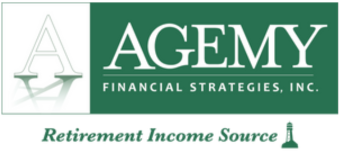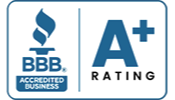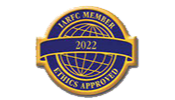Building a Solid Retirement Portfolio: Essential Investments
Building a retirement portfolio is essential for several reasons. Here, we’ll help you understand the fundamentals of building your retirement portfolio and the critical investments that can make it robust and sustainable.
Retirement portfolios allow you to accumulate wealth over time, ensuring a stable income stream during retirement. About 27% of people 59 or older have no retirement savings. By creating a solid retirement portfolio and making informed investment decisions, you can grow your savings and safeguard against inflation. This blog will explore what a well-structured retirement portfolio can do for retirees.
Join us as we explore the vital investments that will give you the freedom to enjoy the retirement lifestyle you desire.
Understanding Risk Tolerance
Understanding your risk tolerance is crucial before building a retirement portfolio. Risk tolerance refers to your comfort level with taking on investment risks and experiencing potential fluctuations in the value of your portfolio. Assessing your risk tolerance involves considering your financial goals, time horizon, and personal circumstances. There are three types of risk tolerance:
- High-Risk Tolerance: A higher risk tolerance may indicate a willingness to pursue investments with higher potential returns and greater volatility.
- Moderate Risk Tolerance: If you possess a moderate risk tolerance, you are comfortable assuming some risk level. You tend to prefer investments that have the potential to generate steady gains over time while acknowledging the possibility of moderate fluctuations.
- Lower Risk Tolerance: This leads to a preference for more conservative investments with lower potential returns but more excellent stability.
Understanding your risk tolerance helps align your investment strategy with your comfort level, ensuring that your retirement portfolio is tailored to your unique needs and helps you confidently navigate the financial landscape. Let’s look at some strategies you can implement into your retirement portfolio.
Diversification and Its Role in Retirement Investing
Sure we rant on about this all the time, but that’s because it’s so important to your financial wellbeing. Diversification is critical when it comes to retirement investing. It is often regarded as one of the golden rules of investing. Its primary objective is to mitigate the risk of significant losses by spreading investments across various asset types. Diversification can be considered as “not putting all your eggs in one basket.”
By diversifying your portfolio, you can capture growth opportunities in different areas. While some investments may underperform or experience downturns, others may generate higher returns, thus balancing out the overall performance of your portfolio. Allocating funds across different asset classes, such as stocks, bonds, real estate, and commodities, allows you to tap into the potential upside of multiple markets and reduce the impact of any individual investment’s volatility or negative performance.
The rationale behind diversification lies in the concept of correlation. Different asset classes tend to have varying levels of correlation with each other. When one asset class is experiencing a decline, another may be on the rise, thus offsetting potential losses. This diversification across asset classes can help manage risk and promote more stable long-term growth in a retirement portfolio.
It is important to note that market conditions and individual investments can still fluctuate, and careful review should be considered. Regular inspection and adjustments to your portfolio may be necessary to maintain a suitable level of diversification based on changing market dynamics and personal goals.
Critical Components of a Solid Retirement Portfolio
To build a robust and sustainable retirement portfolio, it is essential to understand the key components that form a solid foundation. By incorporating these critical elements into your investment strategy, you can enhance the potential for long-term growth and financial security.
1. Stocks
Stocks offer significant growth potential and are favored by long-term investors. Historically, they have provided higher returns than other investments, making them an essential part of a retirement portfolio. Investing in stocks allows you to become a company shareholder and benefit from their growth and success. However, it is necessary to diversify your stock holdings across different industries to mitigate the risk associated with individual stocks. While stocks can be volatile, investing for the long term allows you time to recover from market downturns.
2. Bonds:
Bonds are a fixed-income investment that provides a steady income stream. They are considered less risky than stocks and can be an excellent addition to a retirement portfolio. Governments, municipalities, or corporations can issue bonds. Bonds provide regular interest payments and return the principal upon maturity.
- Corporate bonds: Offer higher interest rates compared to other bond types.
- Municipal bonds: Also known as muni bonds, are issued by states, cities, and other local government entities. These bonds serve to finance public projects or provide public services.
- Treasury bonds: Are issued by the U.S. government. Since they carry no default risk, they do not have to offer the same higher interest rates as corporate bonds. Treasury bonds are considered relatively safe investments due to the government’s backing.
- Investment-Grade Bonds: These bonds have a higher credit rating than high-yield corporate bonds, implying less credit risk.
Bonds offer regular interest payments and return the principal amount upon maturity. It’s important to note that although bonds are relatively safer, they are not entirely risk-free. If interest rates rise, bond prices can fall. The current interest rate for I bonds issued between May 1, 2023, and October 31, 2023, is 4.30%. This rate includes a fixed rate component of 0.90%. Including a mix of government and corporate bonds is advisable to diversify risk.
3. Mutual Funds and ETFs:
Mutual funds are investment vehicles that pool money from multiple investors to invest in a diversified portfolio of stocks, bonds, or other assets. They offer instant diversification and are managed by professional fund managers. Investing in mutual funds allows individuals to access a wide range of securities without extensive research or individual stock selection. But remember, they still carry risks. The value of these funds will fluctuate based on the performance of the underlying assets.
Like mutual funds, exchange-traded funds (ETFs) expose investors to a diversified portfolio of assets. ETFs can track specific indexes or sectors, making them attractive investments. They offer flexibility, liquidity, and lower expense ratios than mutual funds, making them suitable for retirement portfolios.
4. Real Estate Investment Trusts:
Real Estate Investment Trusts (REITs) are investment vehicles that specialize in owning, operating, or financing income-generating real estate properties. By investing in REITs, individuals can gain exposure to the real estate market and enjoy the benefits of real estate ownership without the challenges and responsibilities of being a landlord.
Investing in REITs offers several advantages. Firstly, it allows for diversification within the real estate sector, as REITs often hold various properties across different geographic locations and property types. This diversification helps mitigate risk and can provide a more stable income stream. Additionally, REITs offer liquidity as they are publicly traded on stock exchanges, allowing investors to buy or sell shares quickly.
It’s important to note that the performance of REITs can be influenced by factors such as property market conditions, interest rates, and economic cycles. Therefore, before making investment decisions, careful research and analysis of specific REITs and their underlying properties are recommended.
5. Certificates of Deposit:
Certificates of Deposit (CDs) are financial instruments banks and credit unions offer. They function as time deposits, meaning you deposit a specific amount for a fixed period. In return, the financial institution provides a fixed interest rate constant throughout the CD’s term. CDs are considered low-risk investments, making them an attractive option for conservative investors looking for predictable income during retirement.
The principal amount invested in a CD is typically insured by the government up to certain limits, providing an additional layer of security. Interest rates offered on a CD are usually higher than in traditional savings accounts, allowing investors to earn a guaranteed return on their investment. The longer the CD’s term, the higher the interest rate.
Importance of Regular Portfolio Review and Rebalancing
It’s important to remember that portfolio management is not just a one-and-done scenario. Portfolios should be carefully managed and updated yearly or semi-annually. Collaborating with a Fiduciary Advisor holds utmost importance regarding your retirement portfolio. It is essential to consult with a financial advisor – preferably a Fiduciary – who can help tailor an investment strategy based on your goals and risk tolerance. You can pave the way for a secure retirement with suitable investments and a long-term perspective.
At Agemy Financial Strategies, our Fiduciary advisors care. We provide tailored solutions for your investment portfolio, retirement plan, and lifestyle management needs. Our priority is helping you take care of yourself and your family. We want to learn more about your situation, identify your dreams and goals, and provide you with the highest level of service.
Final Thoughts
Building a robust retirement portfolio involves understanding various asset types, their benefits, risks, and how they fit into your investment strategy. Allow our team of Fiduciary Advisors to assist you in simplifying the retirement planning process, enabling you to embrace the joys of your golden years fully.
With the support and proactive guidance from the Agemy team, you can take control of managing your retirement savings and face the future with confidence, knowing that your vision of retirement is within reach.







Leave a Reply
Want to join the discussion?Feel free to contribute!